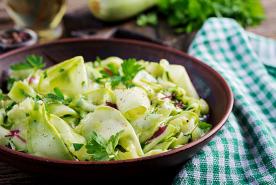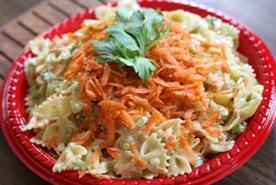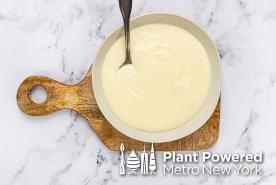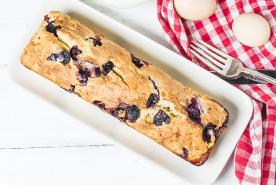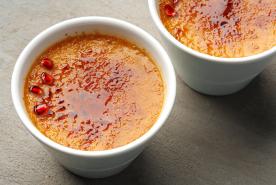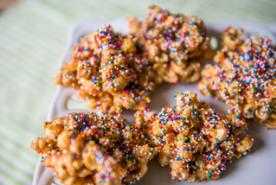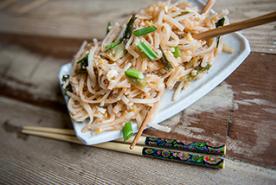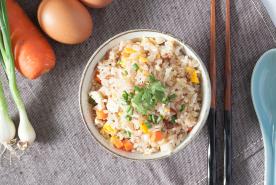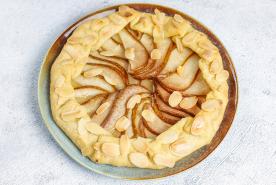Last updated: January 02, 2023
Medically reviewed by: NKF Patient Education Team
Learn about the benefits of healthy oils and fats, their importance for kidney-friendly diets, and discover heart-healthy recipes for salad dressings.
Table of Contents
- Why are healthy oils and fats a superfood?
- Healthy oils and fats and kidney disease
- Uses of different healthy oils and fats
- Recipes for heart-healthy salad dressings
- Italian vinaigrette
- Honey mustard dressing
- Want to save this information for later?
- For more information, contact the National Kidney Foundation
Healthy oils and fats include those rich in monounsaturated and polyunsaturated fatty acids (MUFA and PUFA). Bad fats include industrial-made trans-fat and saturated fats. A variety of foods are rich in PUFA and MUFA, but we need to limit our intake of dietary fat to avoid excessive calorie intake.
Why are healthy oils and fats a superfood?
Fat in our diets is a major source of energy (calories) and helps absorb some vitamins and minerals.
Healthy oils and fats are also important because:
- Fat is needed to build cell membranes and nerve tissue
- It is essential for blood clotting, muscle movement, and to lower inflammation
- Healthy oils/fats may help lower the odds of heart disease and atherosclerosis by lowering LDL cholesterol
Uses of different healthy oils and fats
| Healthy fat or oil | Fat description | Smoke point* | Uses |
| Avocado oil | MUFA, High in oleic acid, lutein, carotenoids, and antioxidants | Very high | Good for roasting and frying. The neutral flavor makes it a good option for baking. |
| Canola oil | MUFA and PUFA | High | Good for roasting and frying. Neutral flavor. |
| Flaxseed oil | PUFA, High in omega-3 fatty acids | Very low | Do not heat this oil. Use in cold dishes. |
| Grapeseed oil | PUFA, High in omega-6 fatty acids and antioxidants such as vitamins D, C, and E | High | Good for cooking and grilling. |
| Olive oil | MUFA, Extra virgin olive oil is high in antioxidants | Low | Good for sautéed dishes and baked goods. |
| Sesame oil | PUFA, High in antioxidants | High | Good for stir-frying but has a strong flavor. |
| Sunflower oil | Mostly polyunsaturated, High in omega-6 fatty acids and vitamin E | High | Good for deep-frying, pan-frying, sautéing, roasting, grilling, baking, & salad dressings. Mild flavor. |
| Walnut oil | Mostly PUFA, High in omega-3 fatty acids | Very low | Do not use for cooking. Best for salad dressings and as a flavor booster to finish a dish. |
*Smoke point = temperature at which the fat or oil begins to smoke
Recipes for heart-healthy salad dressings
| Oil | The key item in any salad dressing recipe. Extra virgin oil is the best and most common oil to use. You can also substitute sunflower oil or avocado oil for similar results. |
| Vinegar | This often adds acidity. Balsamic, white wine, red wine, rice wine, and apple cider vinegars are all wonderful to try and are featured in the recipes below. |
| Citrus | Lemons, limes, and oranges help add additional acidity while also giving them a touch of sweetness. |
Seasonings | You can add a variety of flavors by mixing in seasonings such as ginger, garlic, herbs, or spices. |
| Sweetener | Not for everyone, but honey, maple syrup or sugar works great when trying to balance the acidity of citrus or vinegar. |
Italian vinaigrette
Serving size: Makes 7, 2 tablespoon servings
Ingredients
- ½ cup extra virgin olive oil
- 2 tablespoon white wine vinegar
- 1 clove garlic, crushed
- 2 teaspoon Italian seasoning
- 2 teaspoon fresh lemon juice
- 3 tablespoon parmesan cheese
- 2 teaspoon honey
- Pinch of salt *
Directions
Combine all ingredients with any one of the following
- blender
- food processor
- jar with a lid
- bowl with a whisk (using a whisk will be more challenging since you need to whisk for a few minutes).
Use as a salad dressing (2 tablespoons) or marinade.
Nutritional facts per serving
Calories 154
Fat 16 g
Cholesterol 1.8 mg
Carbohydrate 2.2 g
Sugar 1.7 g
Sodium 40 mg
(*) ½ tsp salt adds 166mg
Phosphorus 12.6 mg
Honey mustard dressing
Serving size: Makes 7, 2 tablespoon servings
Ingredients
- ½ cup extra virgin olive oil
- 2 Tbsp. Dijon mustard
- 2 Tbsp. white wine or apple cider vinegar
- 3 Tbsp. honey
- pinch of salt *
Directions
Combine all ingredients with any one of the following
- blender
- food processor
- jar with a lid
- bowl with a whisk (using a whisk will be more challenging since you need to whisk for a few minutes).
Use as a salad dressing (2 tablespoons) or marinade.
Nutrition facts per serving
Calories 166
Fat 16 g
Cholesterol 0 mg
Carbohydrate 7.5 g
Sugar 7.2 g
Sodium 119 mg
(*) ½ tsp salt adds 166m
Phosphorus 2 mg
For more information, contact the National Kidney Foundation
Toll-free helpline: 855.NKF.CARES or email: nkfcares@kidney.org
The National Kidney Foundation wishes to thank its Council on Renal Nutrition (CRN) for the development of this fact sheet.
*This content is provided for informational use only and is not intended as medical advice or as a substitute for the medical advice of a healthcare professional.









